
Our archeologists uncovered the port side of an 18th-century ship, including ceiling planks, framing, keel, external hull planking, deadwood and parts of the stern post.
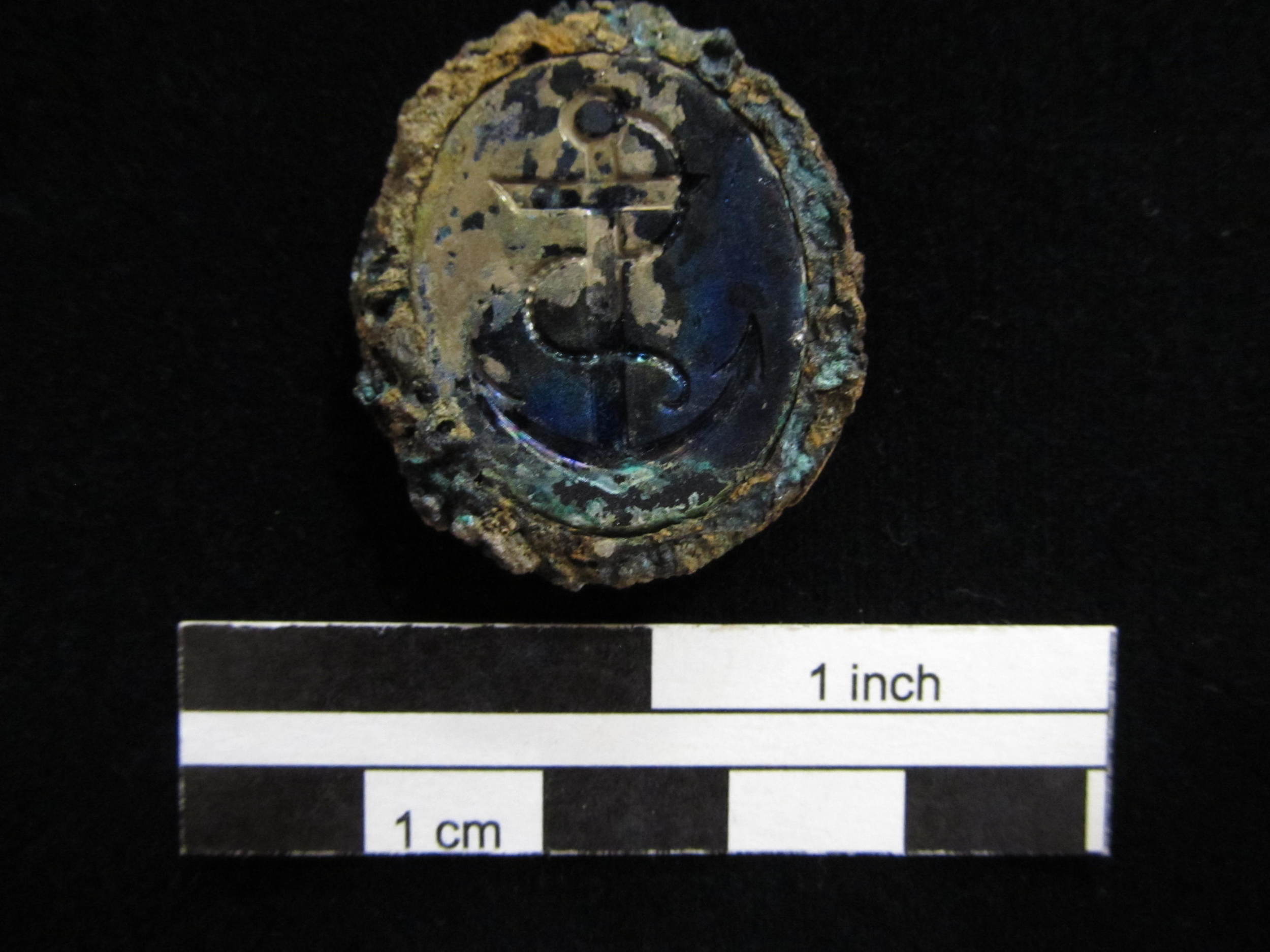
This early-mid-19th century blackglass pendent in a brass setting depicting a fouled anchor on one side and a three-masted ship with furled sails on the other was recovered from a privy context.

WSSI archeologists Vince Gallacci, Daniel Osborne, and Daniel Baicy work to uncover the ship’s hull.

Our archeologists carefully excavate around the hull of the 18th-century ship to uncover the vessel and to recover artifacts.
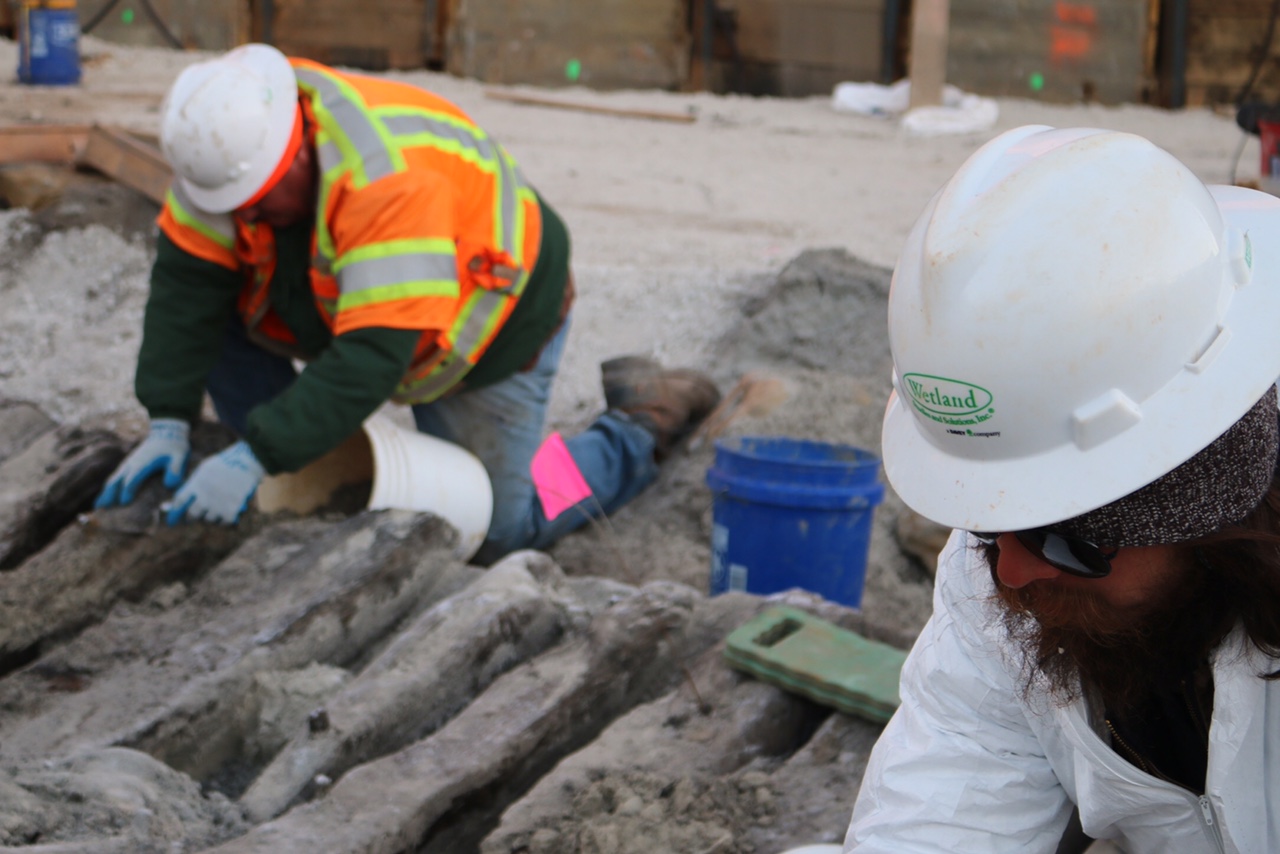
WSSI archeologists Daniel Osborne and Daniel Baicy hand excavate the timbers of the 18th-century ship’s hull.
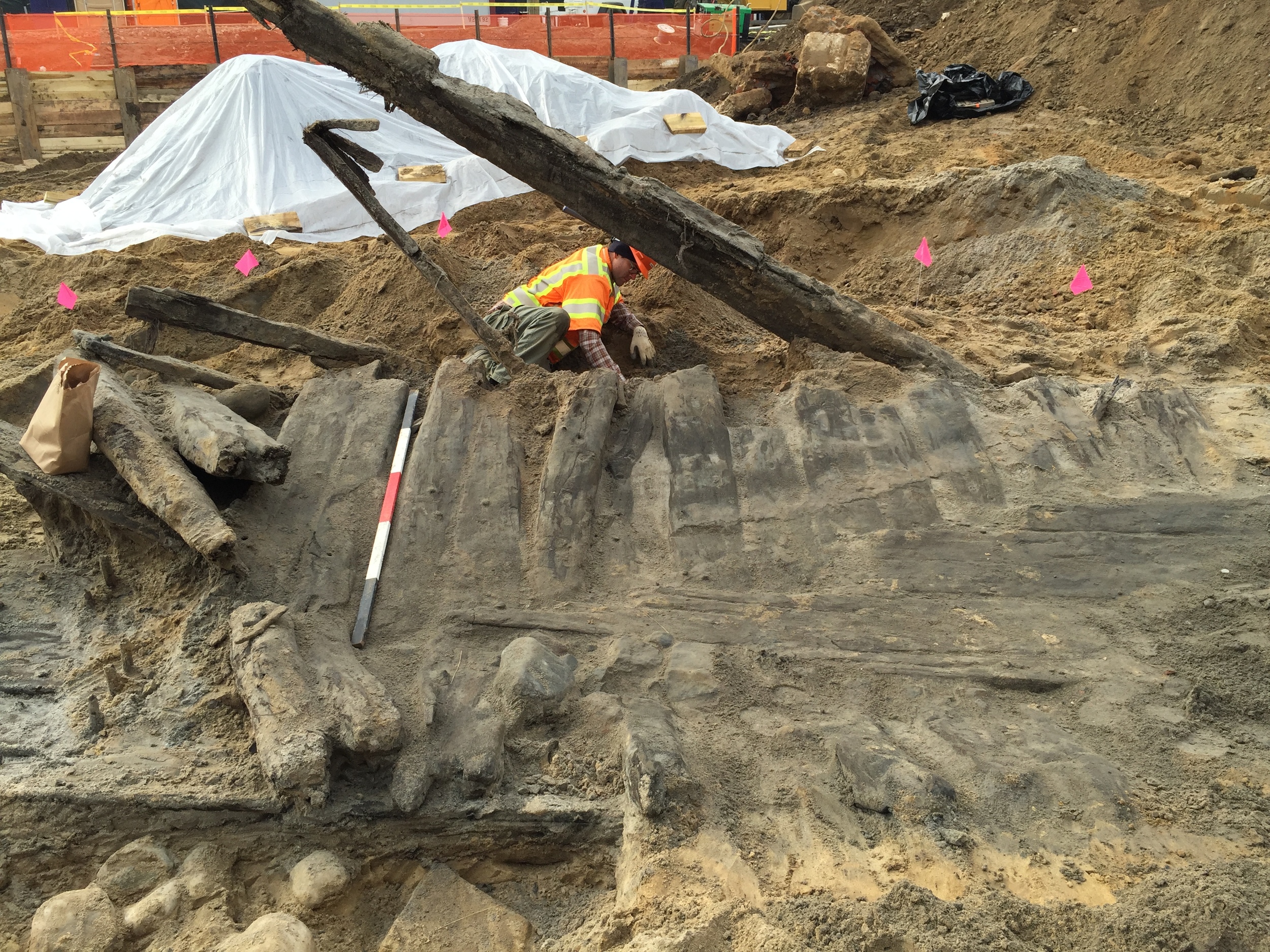
WSSI archeologist Edward Johnson hand excavates around the ship’s hull to recover artifacts.

The remnants of the port side of an 18th-century ship purposely positioned against a circa 1798 bulkhead wharf.

Detail of the framing and construction of the interior of the 18th-century ship.
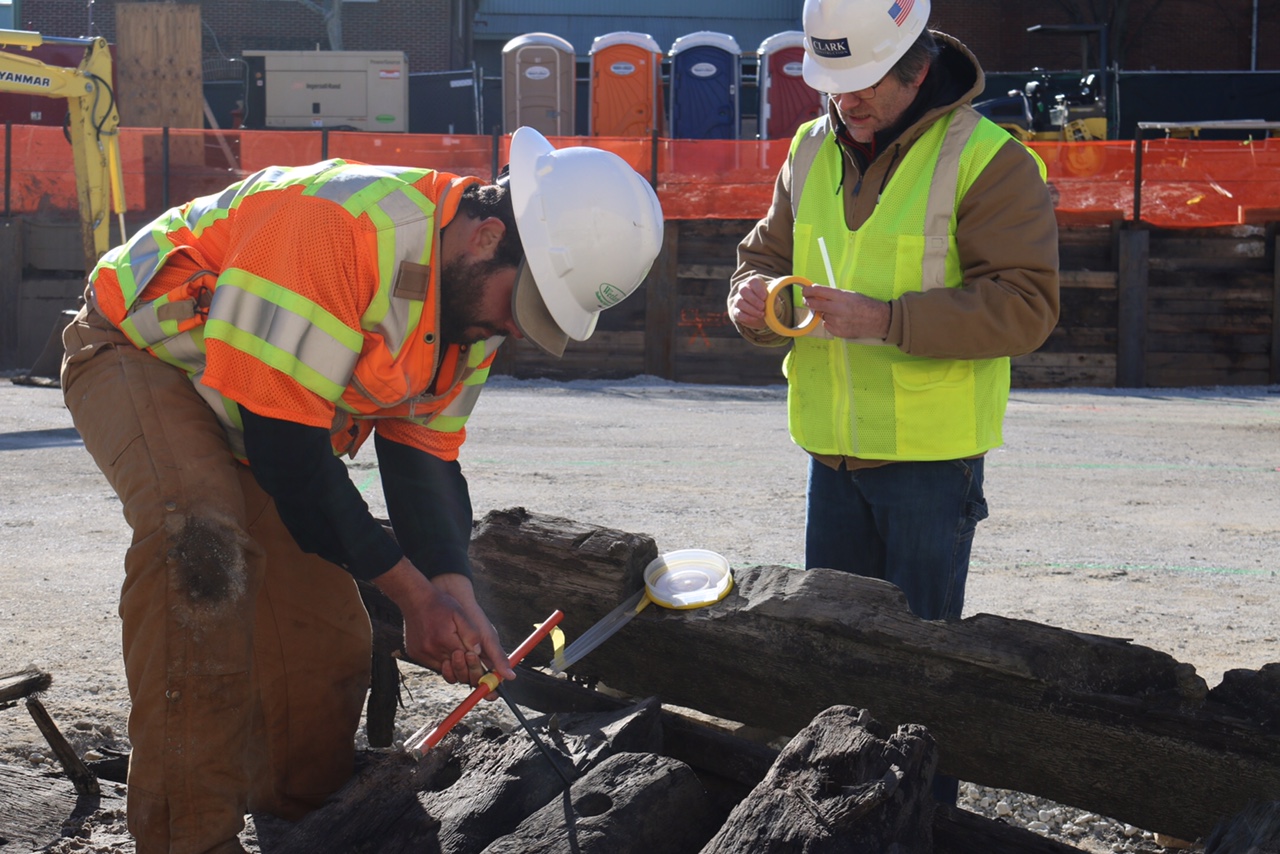
WSSI archeologist Michael Smith assists the Oxford Tree-Ring Laboratory in sampling the ship’s timbers for dendroarcheological dating and sourcing.
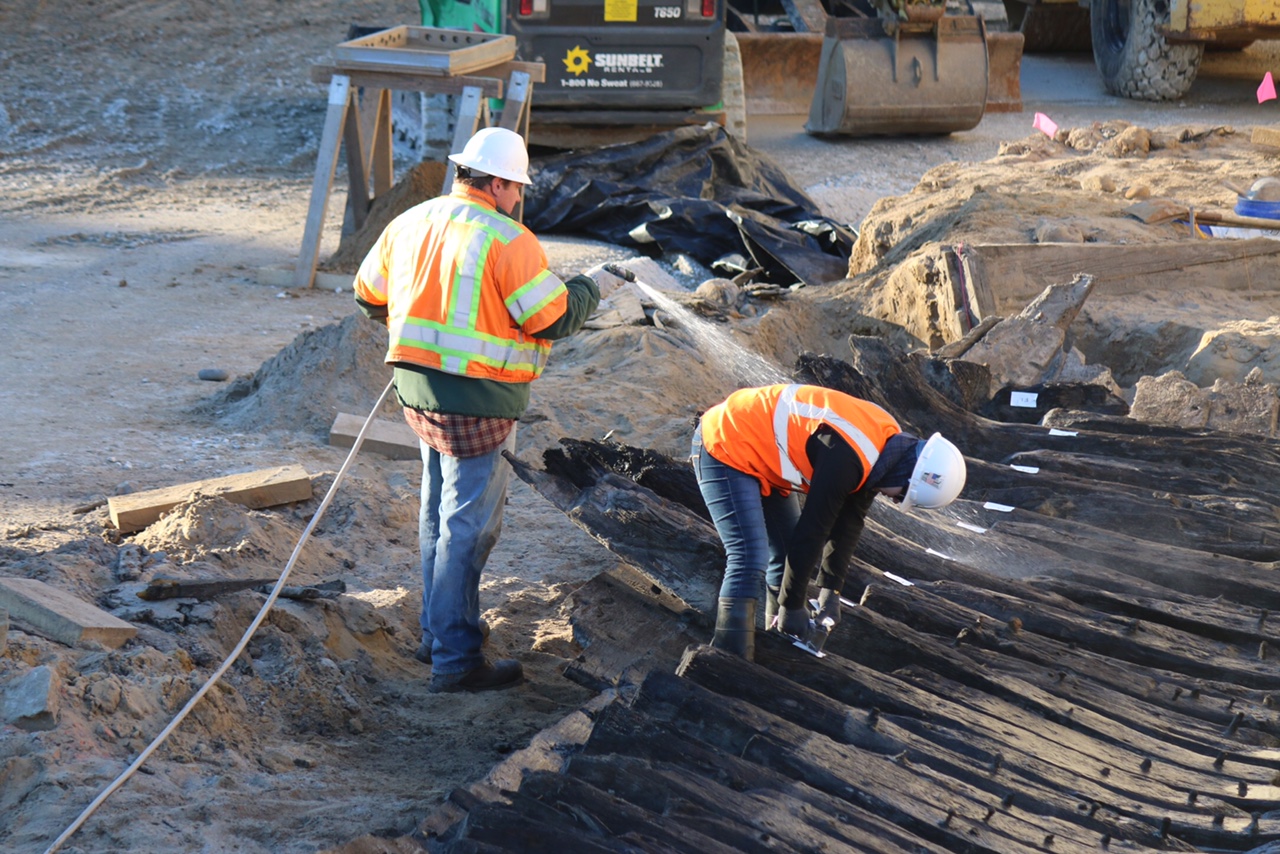
Our archeologists keep the hull of the 18th-century ship wet to prevent deterioration while the head conservator at the Maryland Archaeological Conservation (MAC) Laboratory, labels individual beams of the ship prior to disassembly for preservation.

WSSI archeologists estimate that roughly 30-40% of the port side of the ship is left intact.
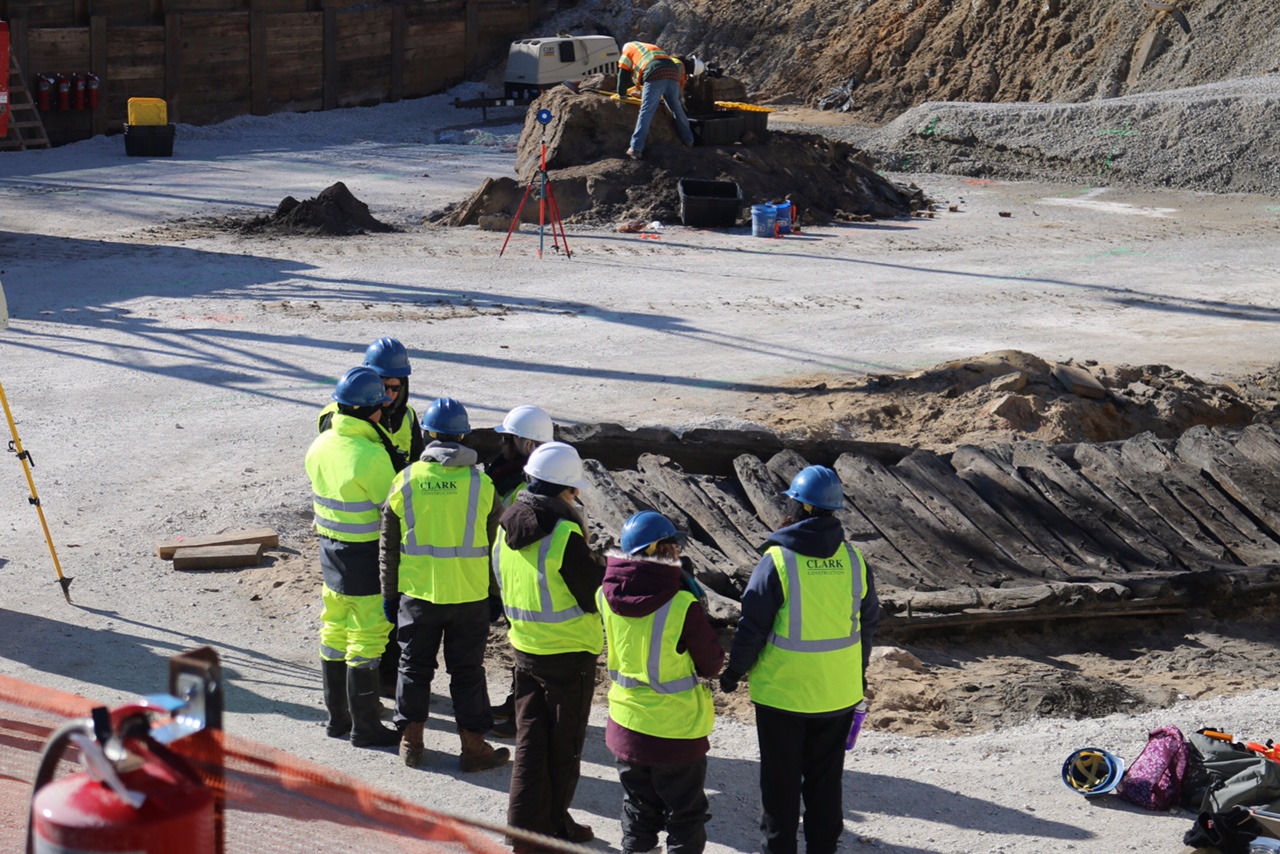
U.S. Navy archeologists were on site to help with the excavation and dismantling of the ship for preservation.

Overview of ship excavations showing removal of framing and futtocks.
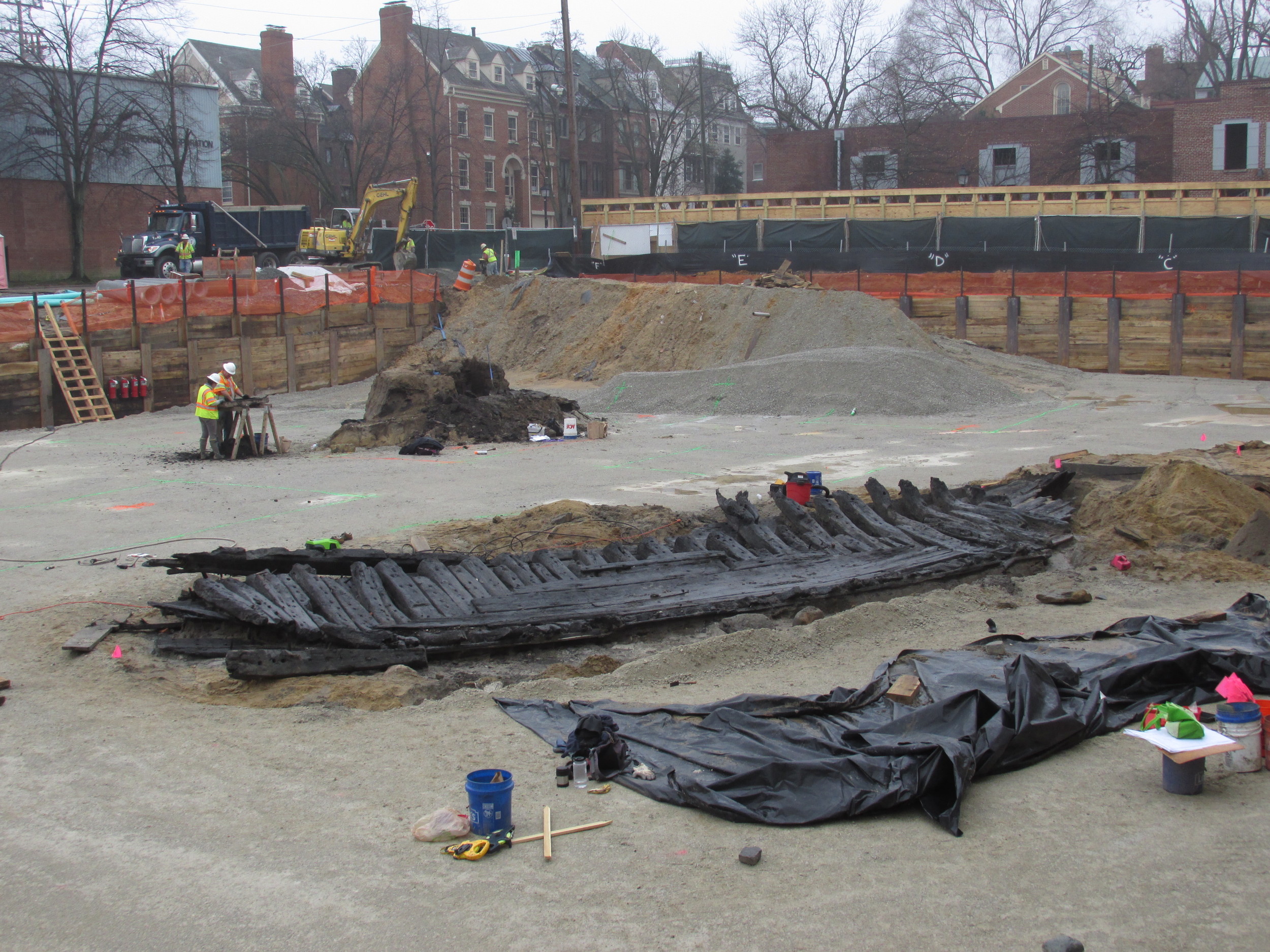
Just beyond the recovered 18th-century ship’s hull, WSSI archeologists excavate an 18th-century privy.

Our archeologist excavate the 18th-century privy thought to be associated with the previously identified the Carlyle warehouse.
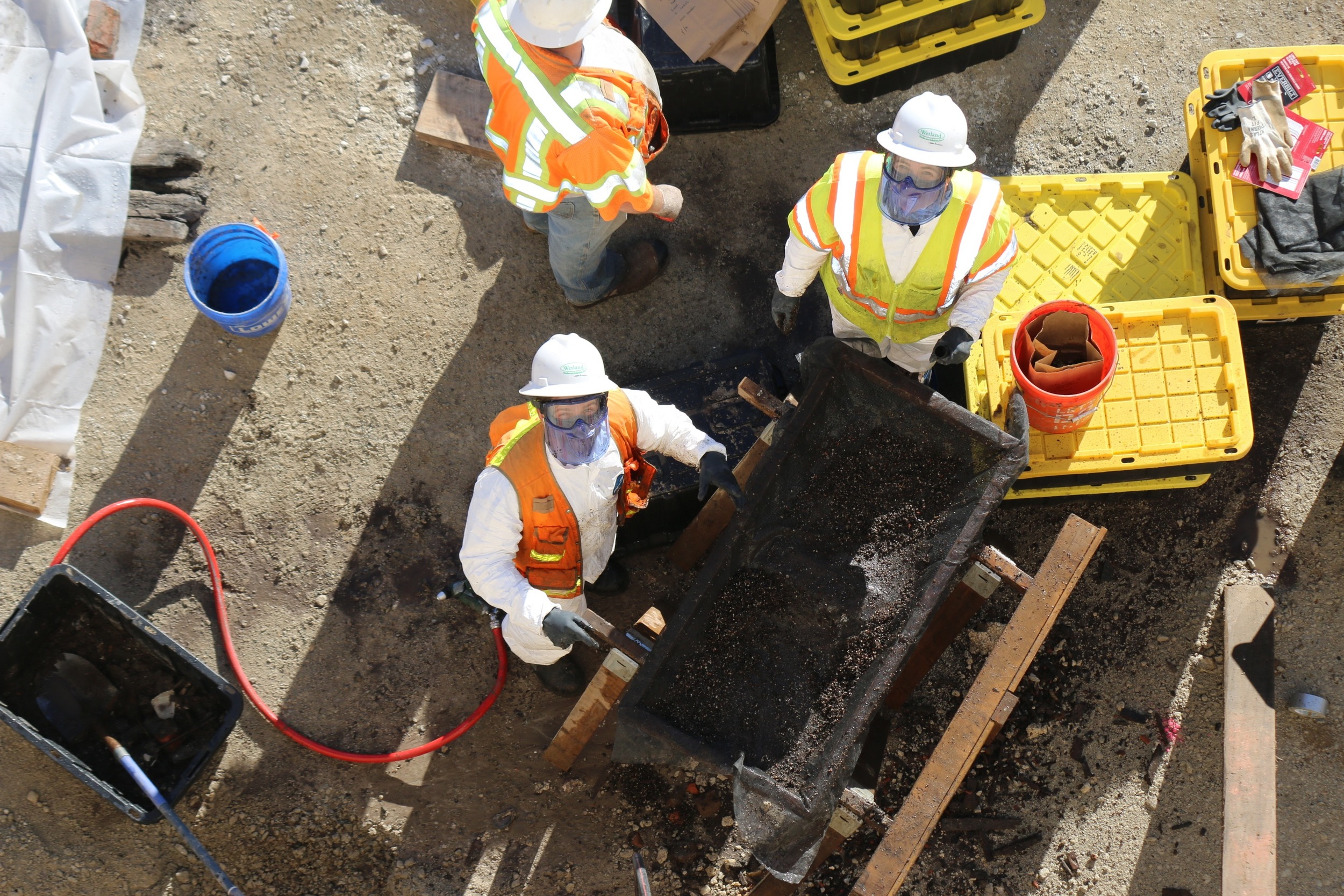
Kate Mott and Vince Gallacci water screening privy soils.
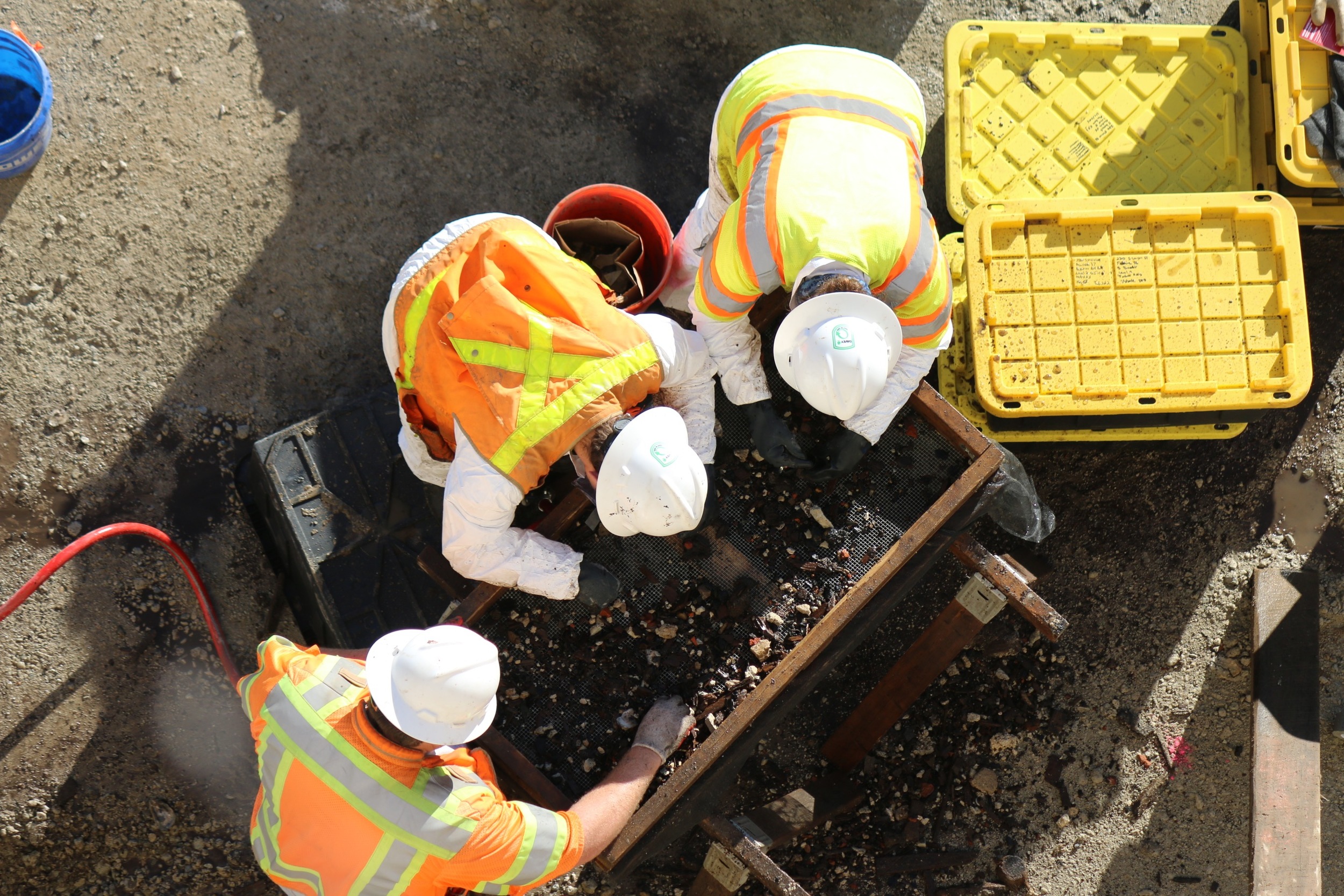
Dan Baicy, Kate Mott and Vince Gallacci water screening privy soils.
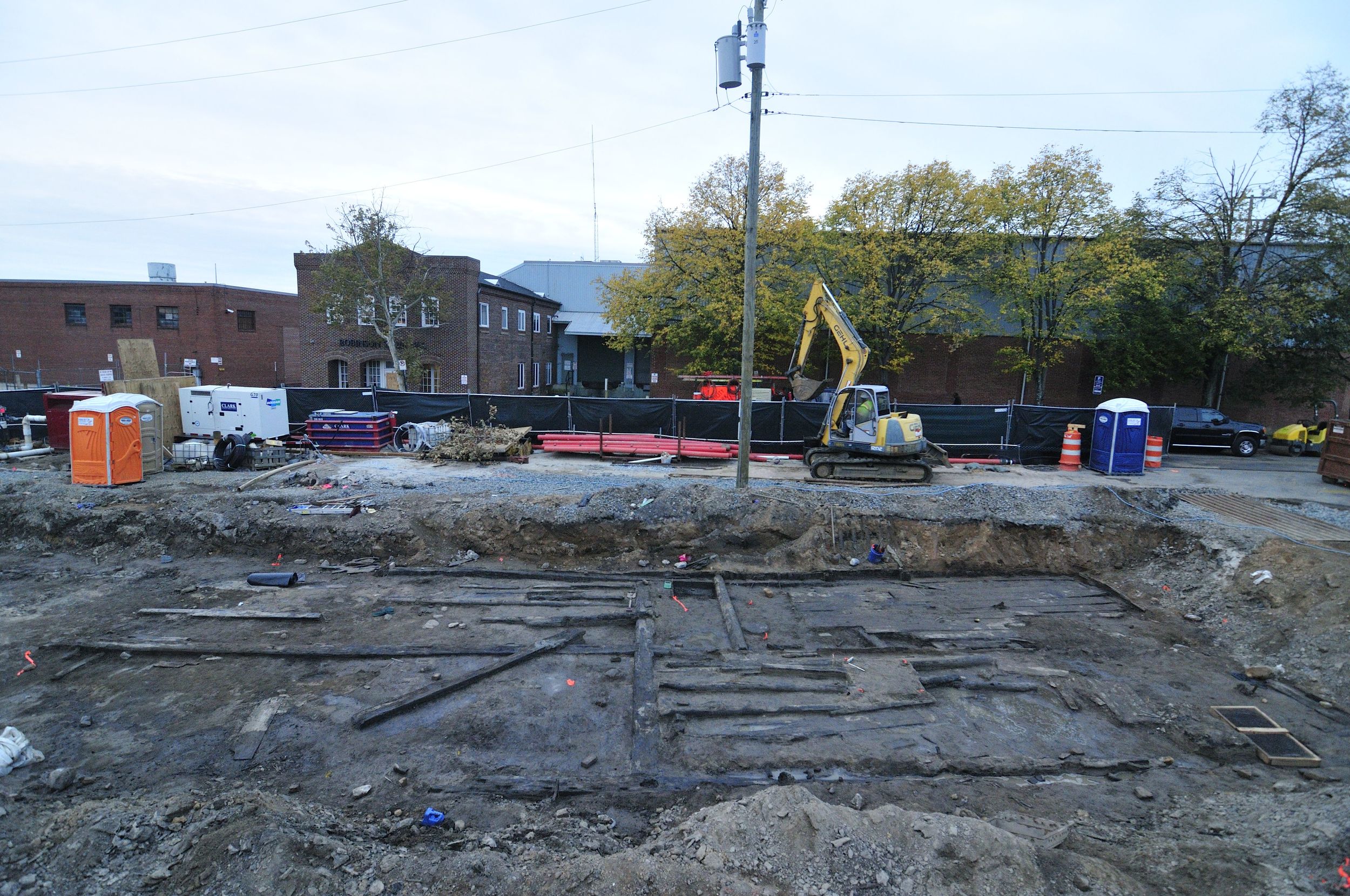
Remnants of the Carlyle warehouse, Alexandria’s first public warehouse constructed around 1755.

Aerial view of the remnants of the Carlyle warehouse, Alexandria’s first public warehouse constructed around 1755.
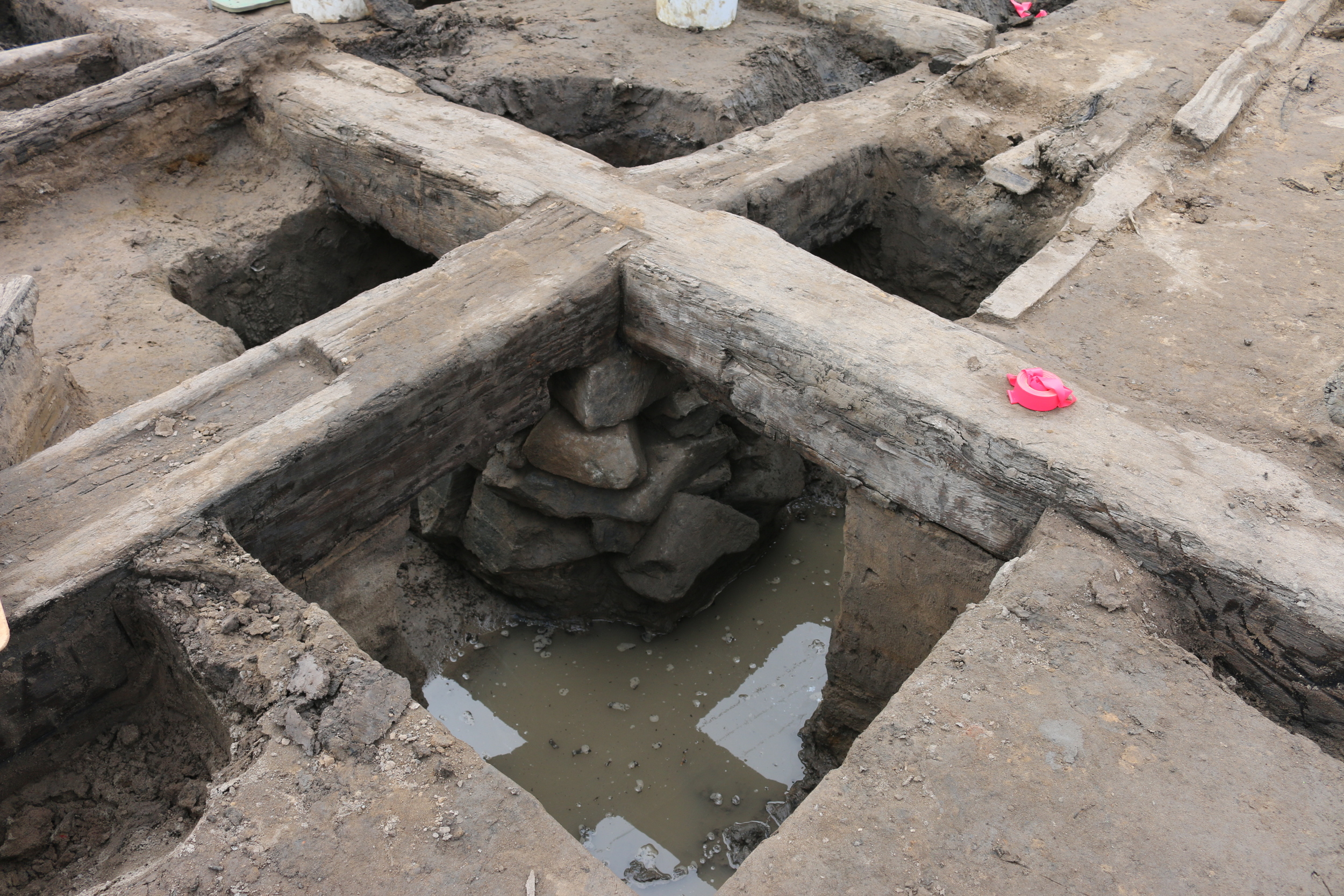
Stone piers supported the 18th-century Carlyle warehouse.

WSSI archeologists assisted City of Alexandria archeologists and conservators from the MAC Laboratory with removing the remnants of the warehouse for preservation.
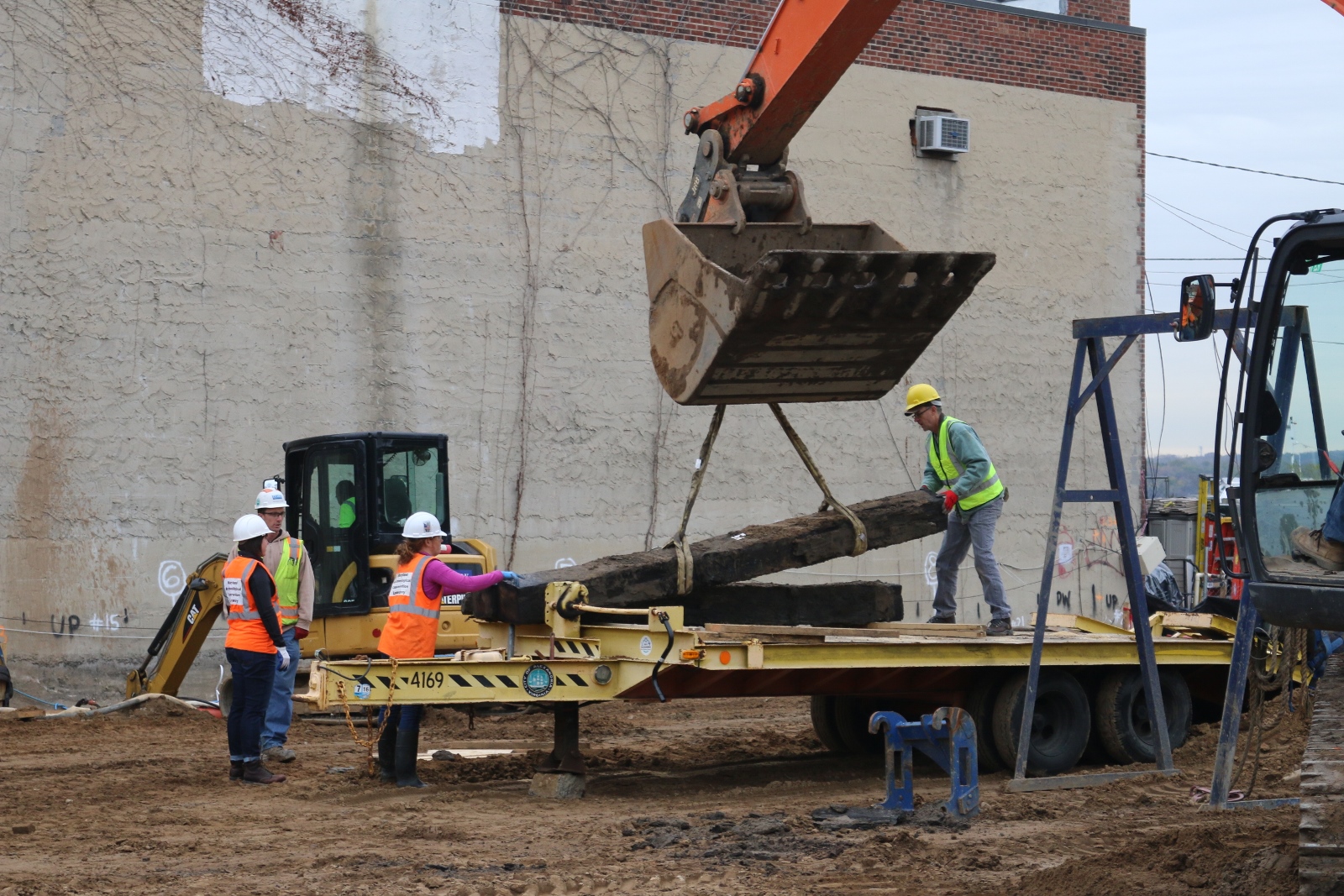
City of Alexandria archeologists and conservators from the MAC Laboratory secure 12 foot sections of the warehouse beams onto a flatbed trailer for transportation.

Our archeologists assisted City of Alexandria archeologists and conservators from the MAC Laboratory with removing the remnants of the warehouse for preservation. After the beams were cut into 12 foot sections, they were lifted with a backhoe onto a flatbed trailer for transport.
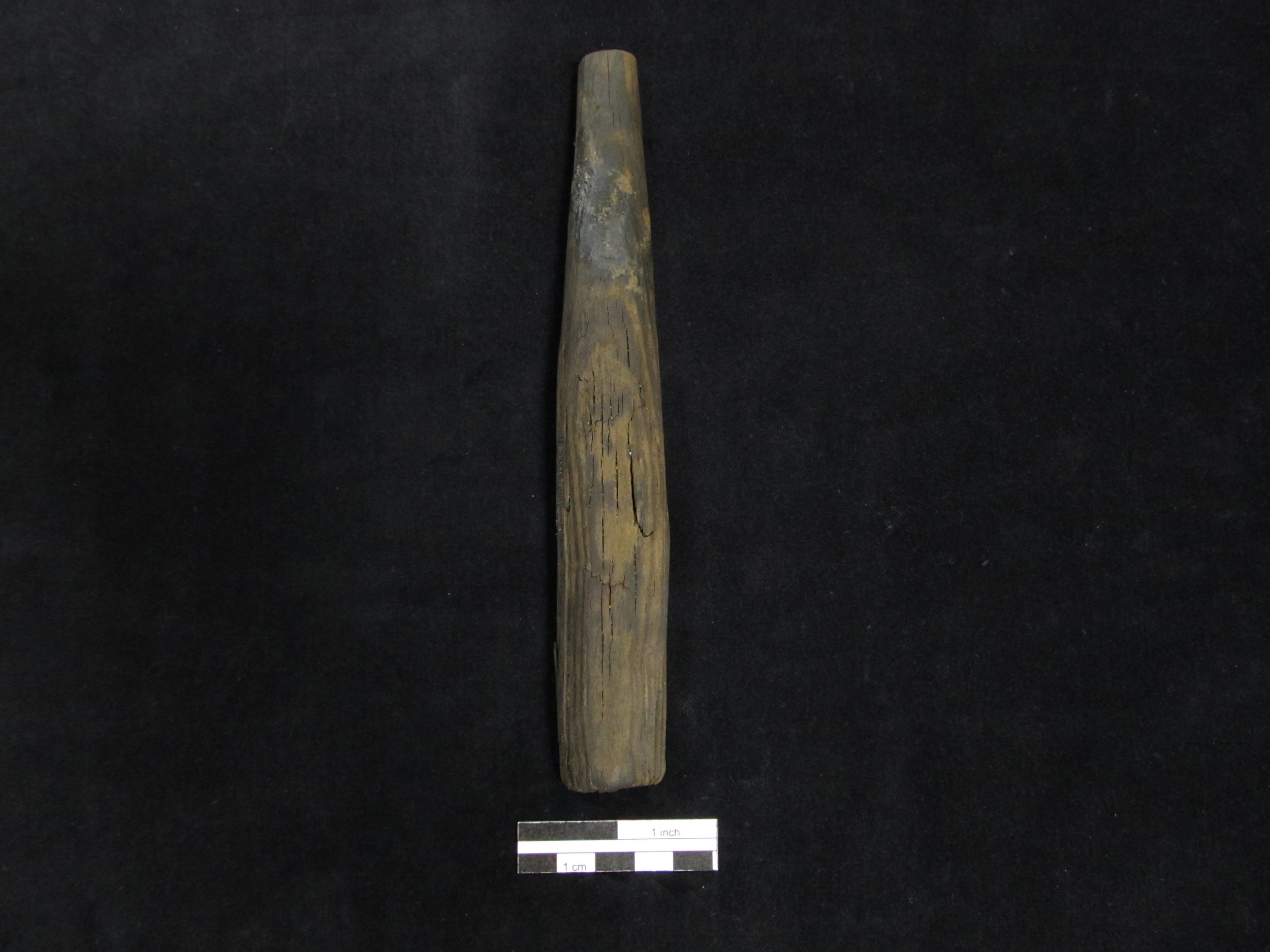
Wooden hammer handle fragment recovered from the Carlyle warehouse.
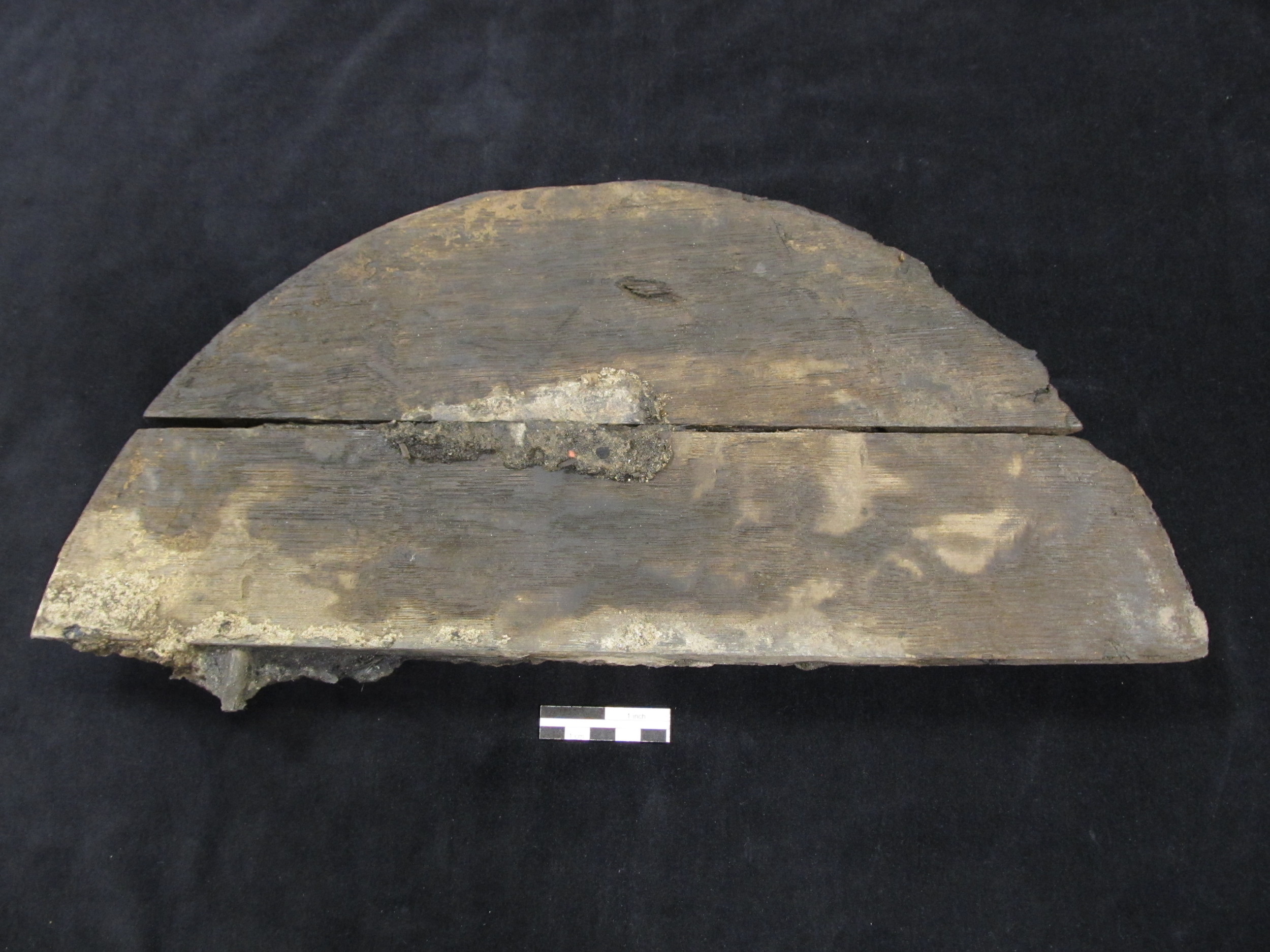
Wooden barrel head fragment recovered from the Carlyle warehouse.
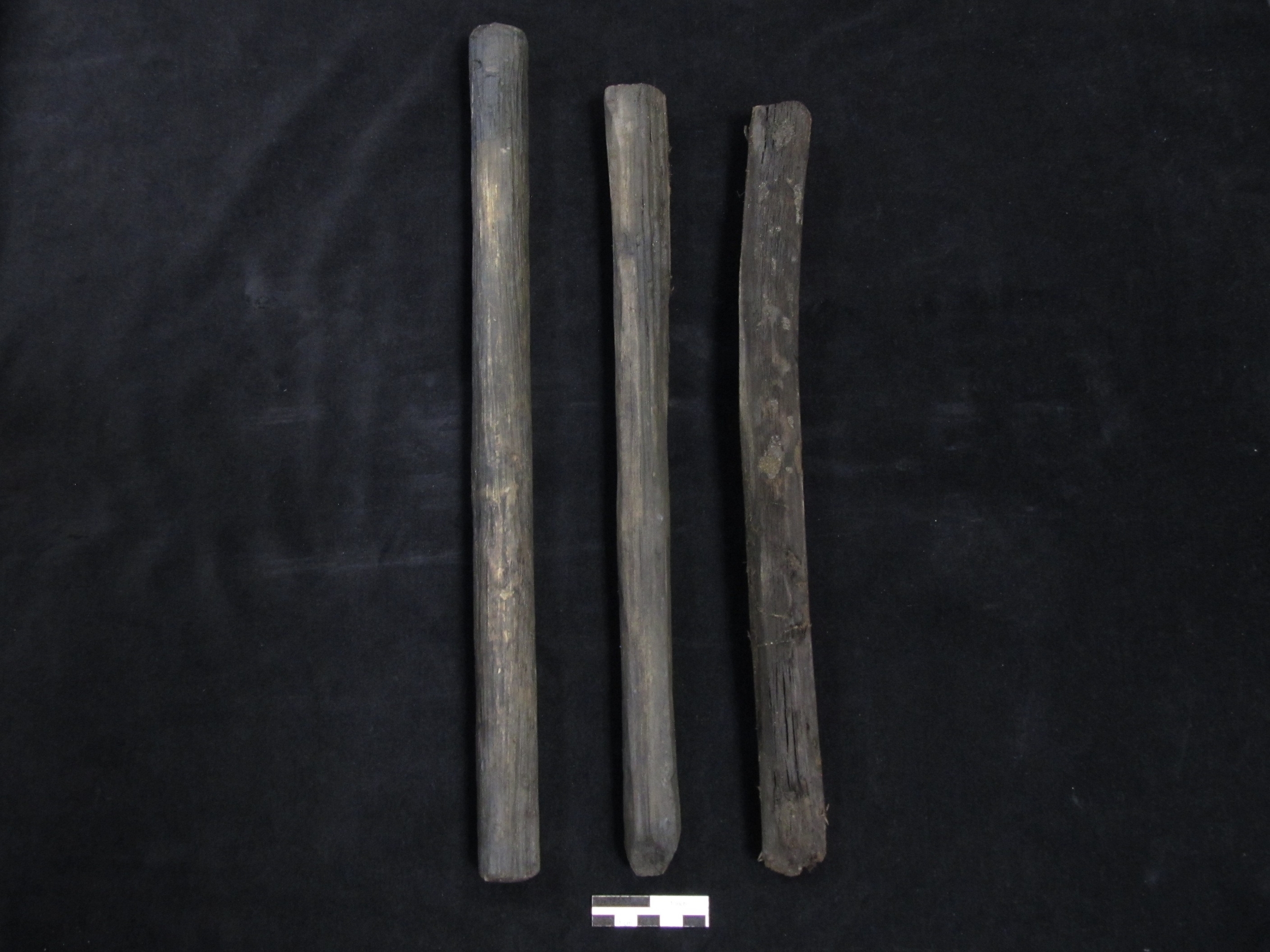
Wooden treenails used in the construction of the warehouse.

Hatchet handle fragment recovered from the Carlyle warehouse.

WSSI archeologist Ed Johnson helps as timbers are lifted from conservation tanks.
In June 2017, Ed and other volunteers removed timbers from their tanks, carefully packed them, and sent them to Texas A&M University's Conservation Research Laboratory for conservation. They will return to Alexandria after a multiyear process.
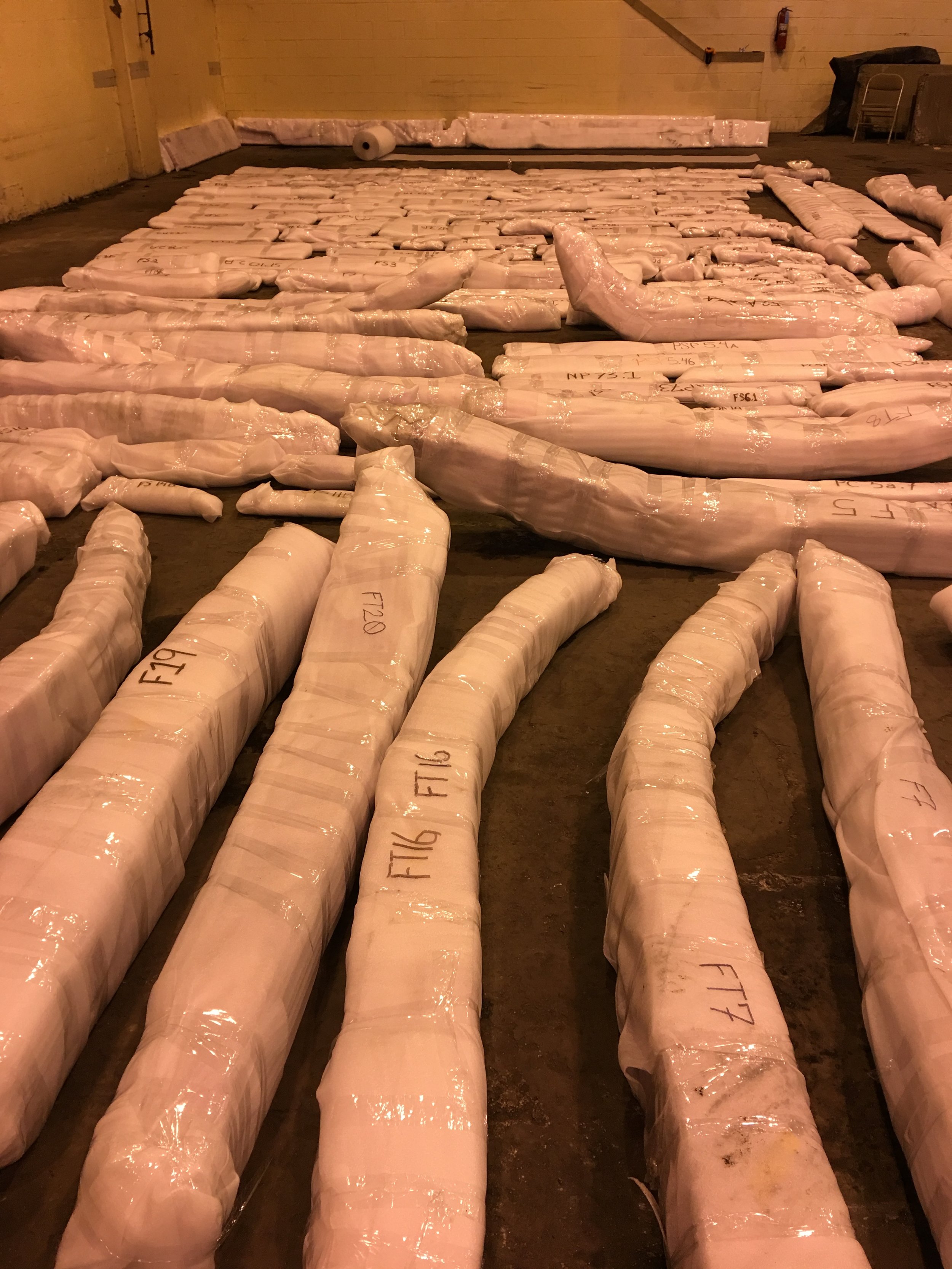
WSSI staff and other volunteers from Friends of Alexandria Archeology carefully wrapped timbers for shipping to the conservation laboratory.
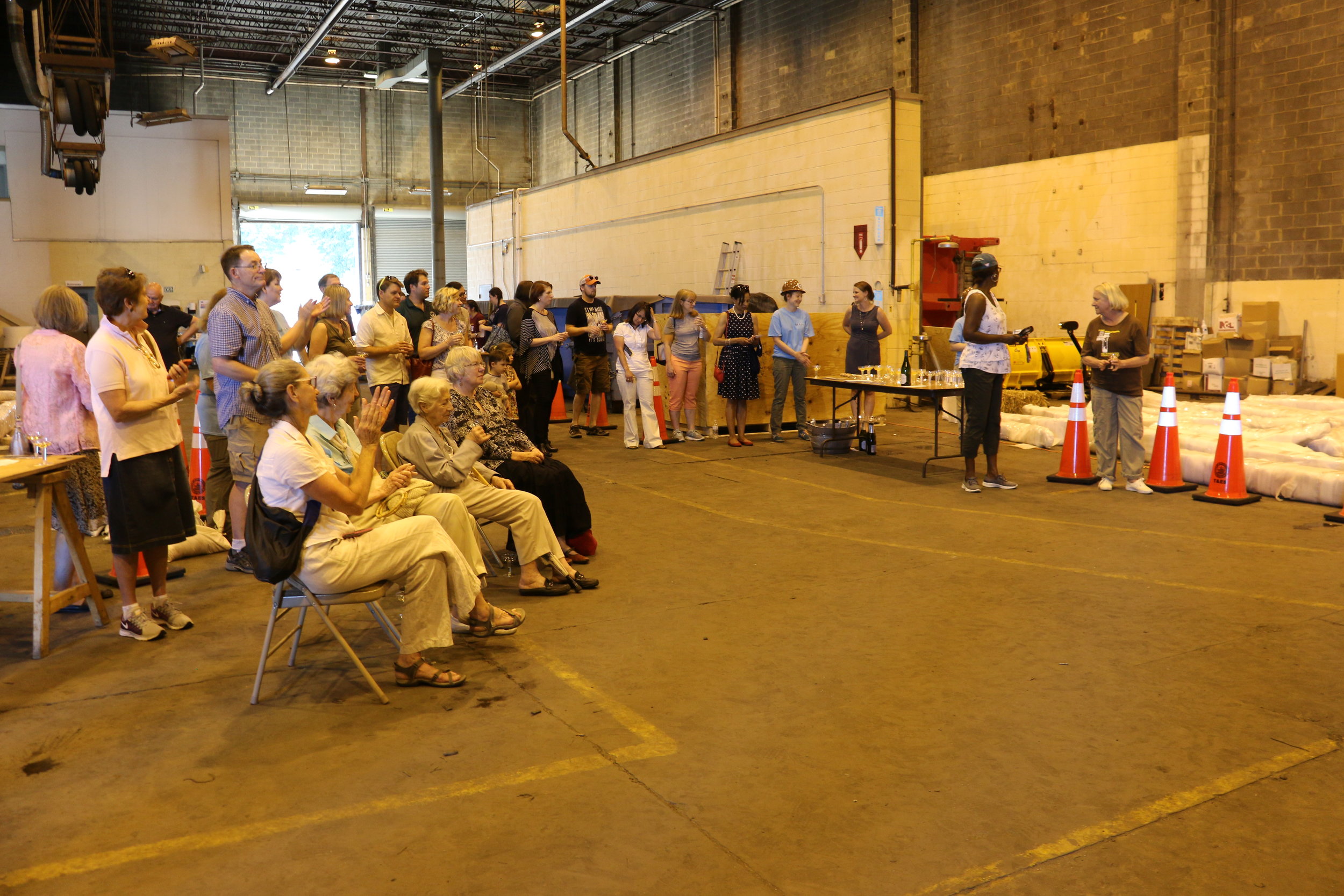
Volunteers and other Friends of Alexandria Archeology gathered in June 2017 to send the ship timbers to Texas A&M University's Conservation Research Lab, an effort undertaken by the Save our Ship campaign.






























